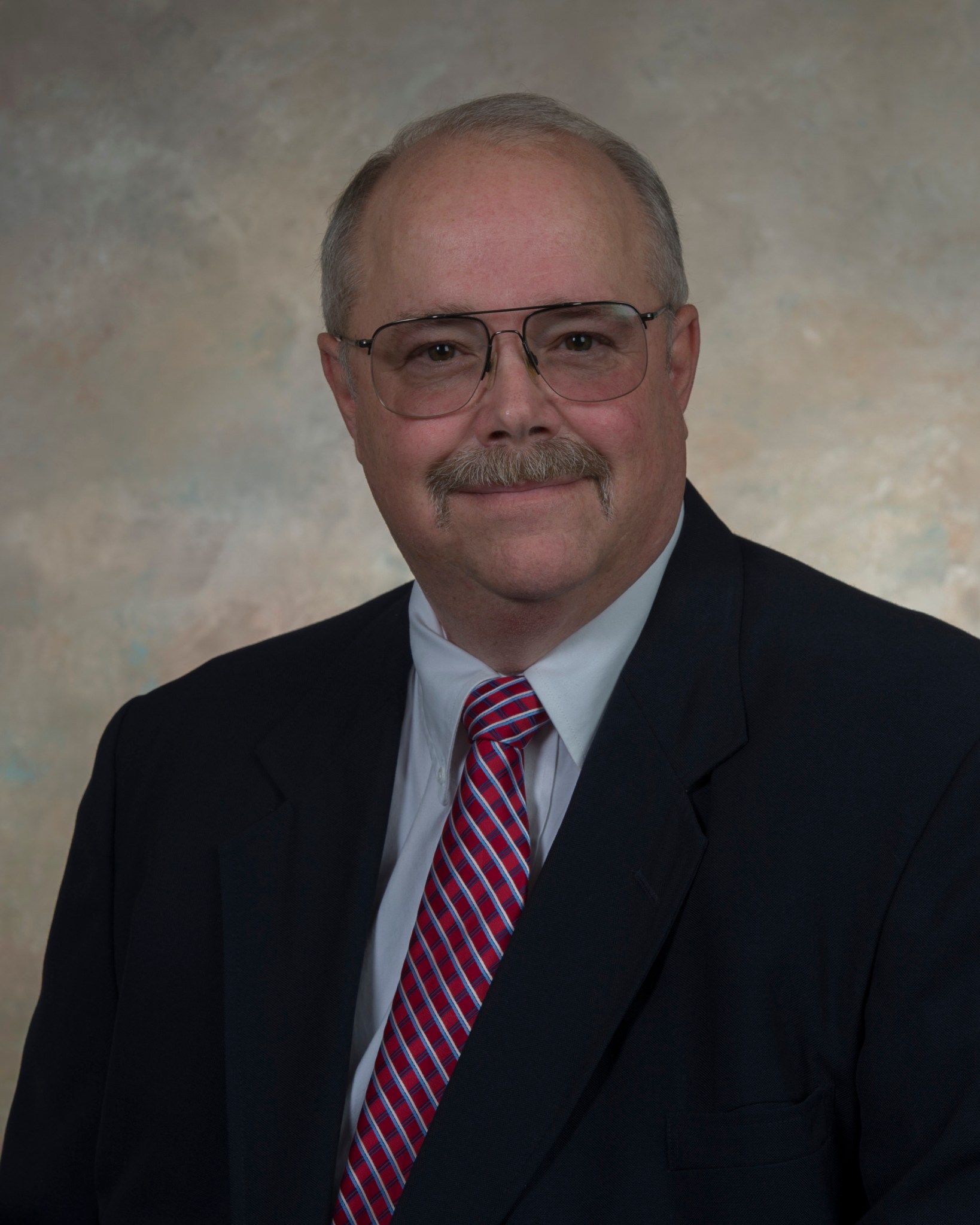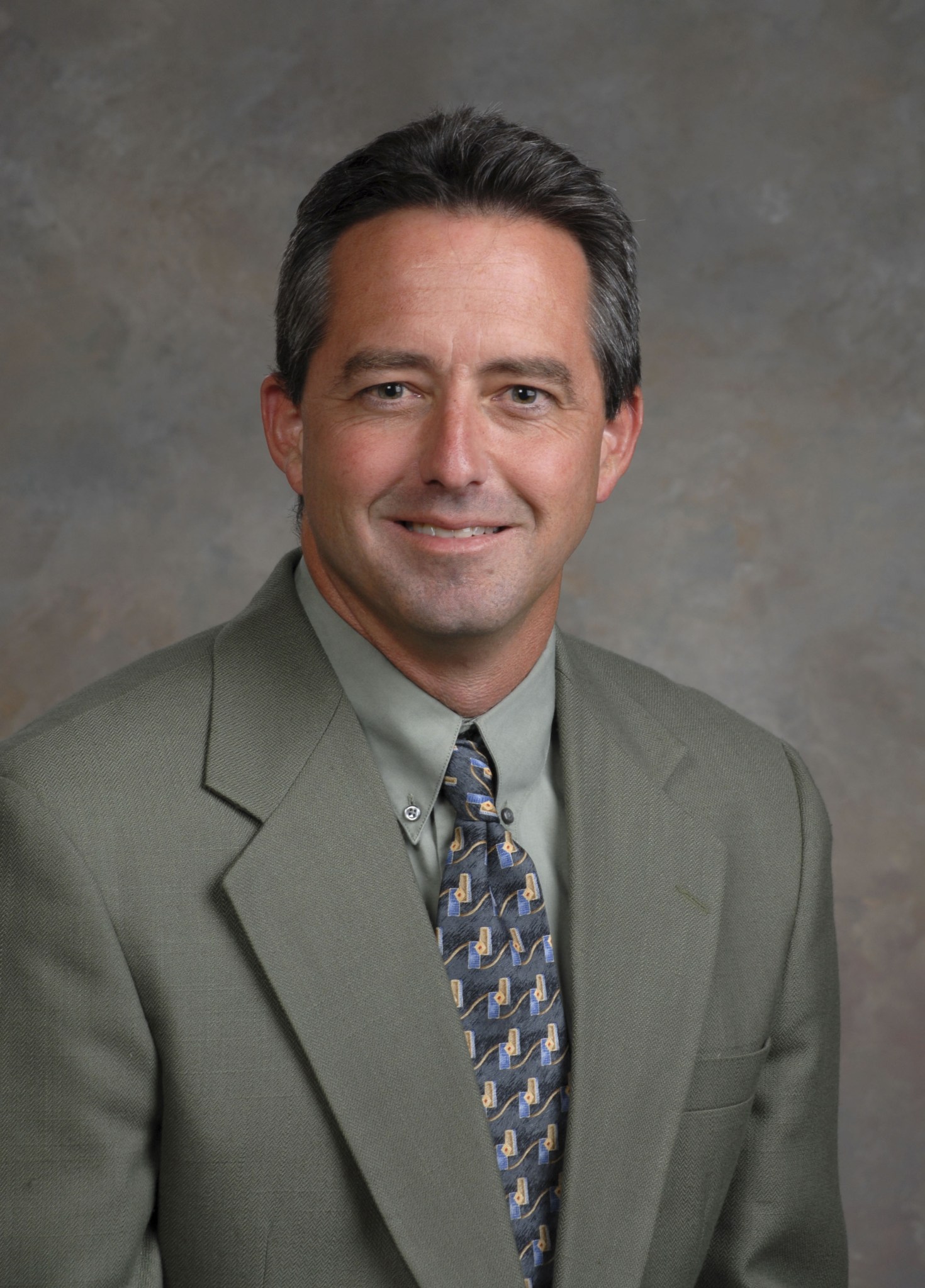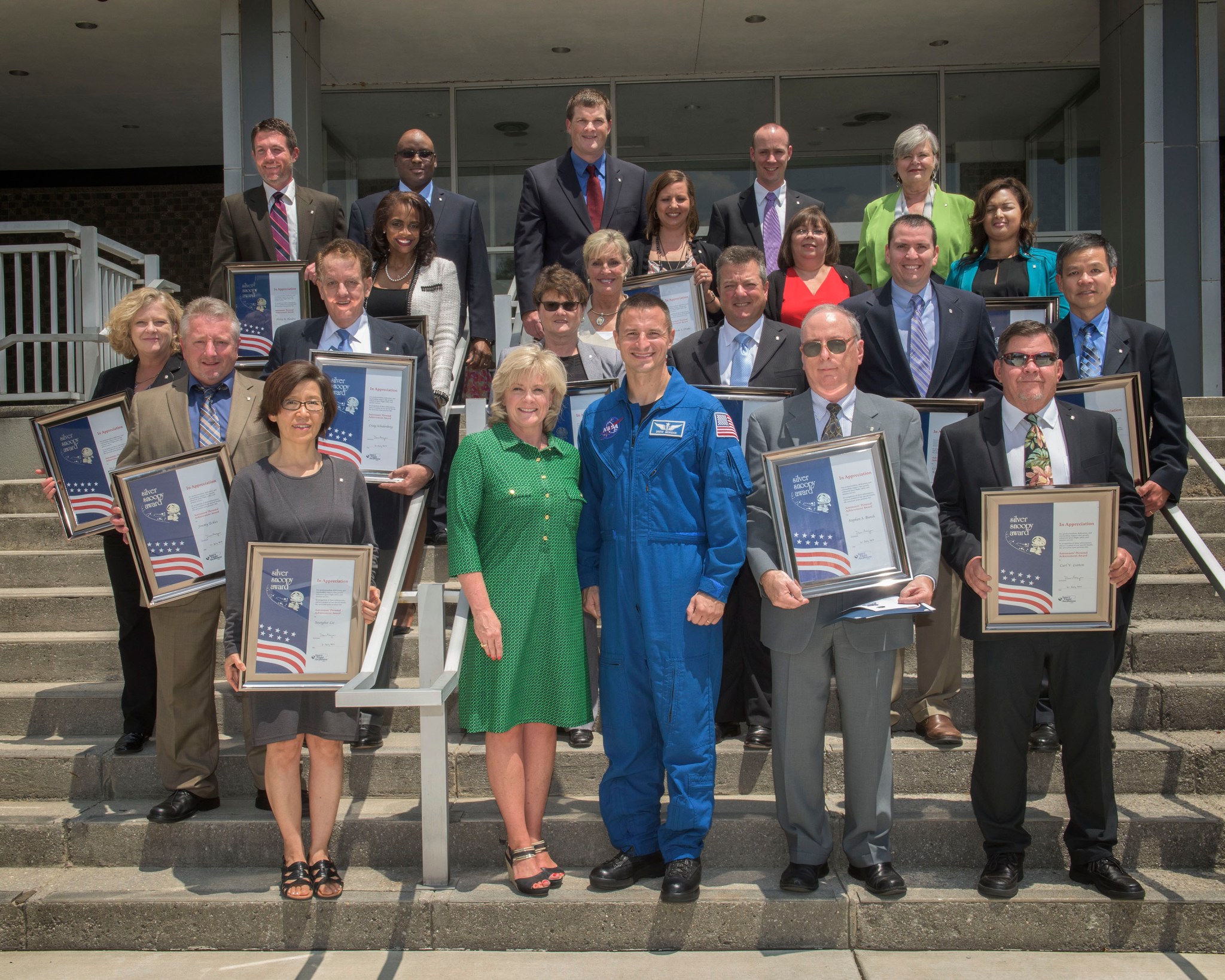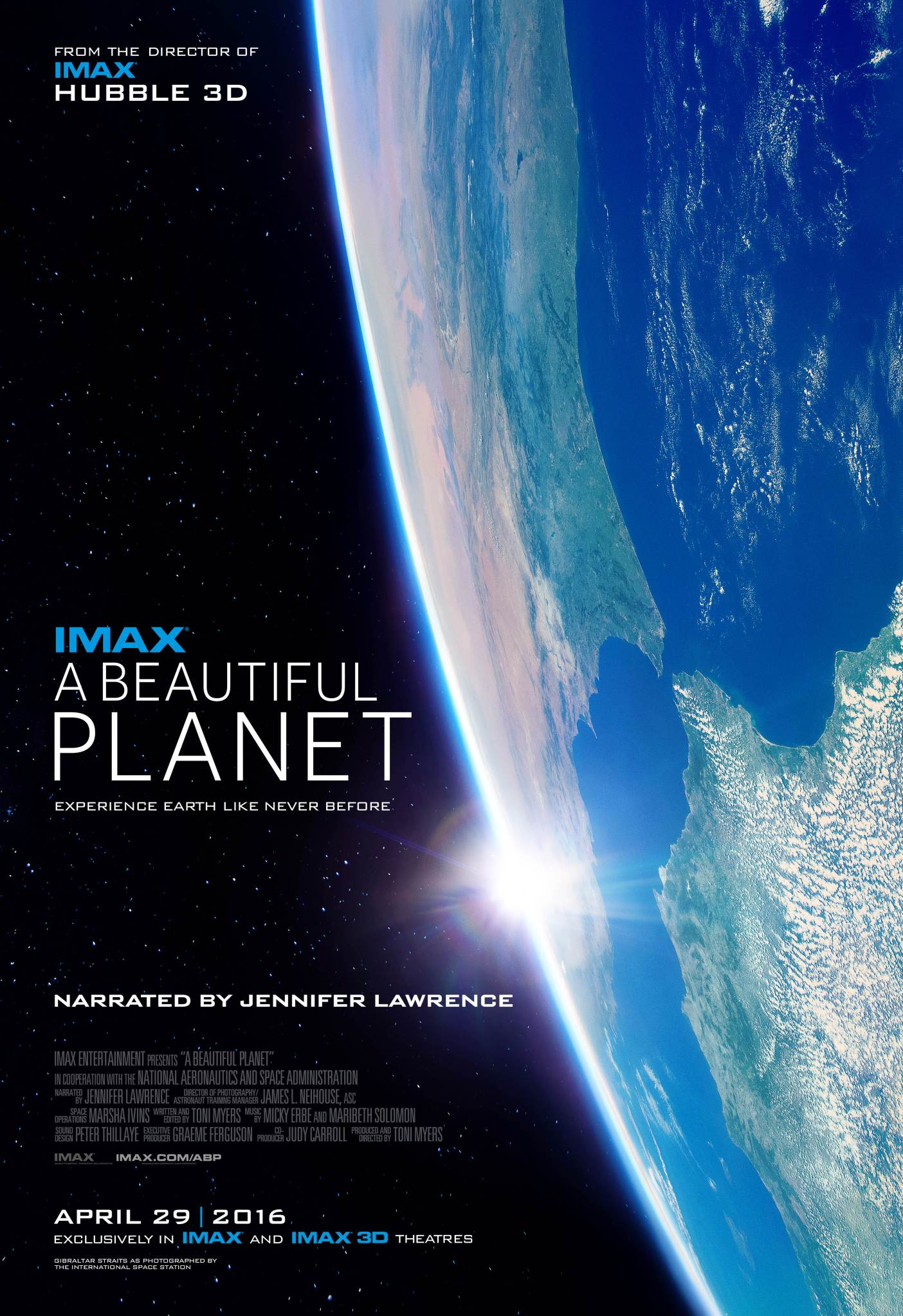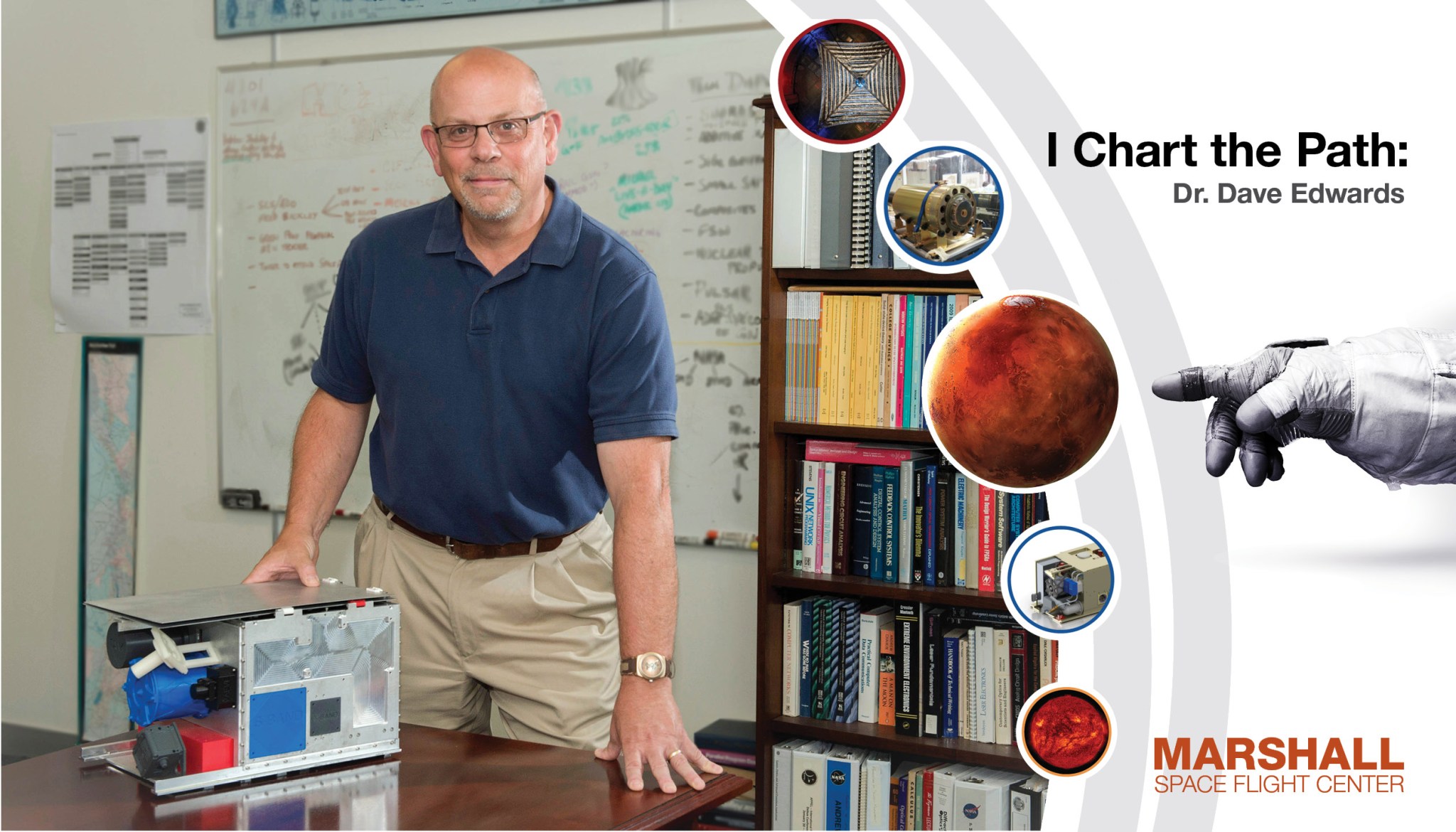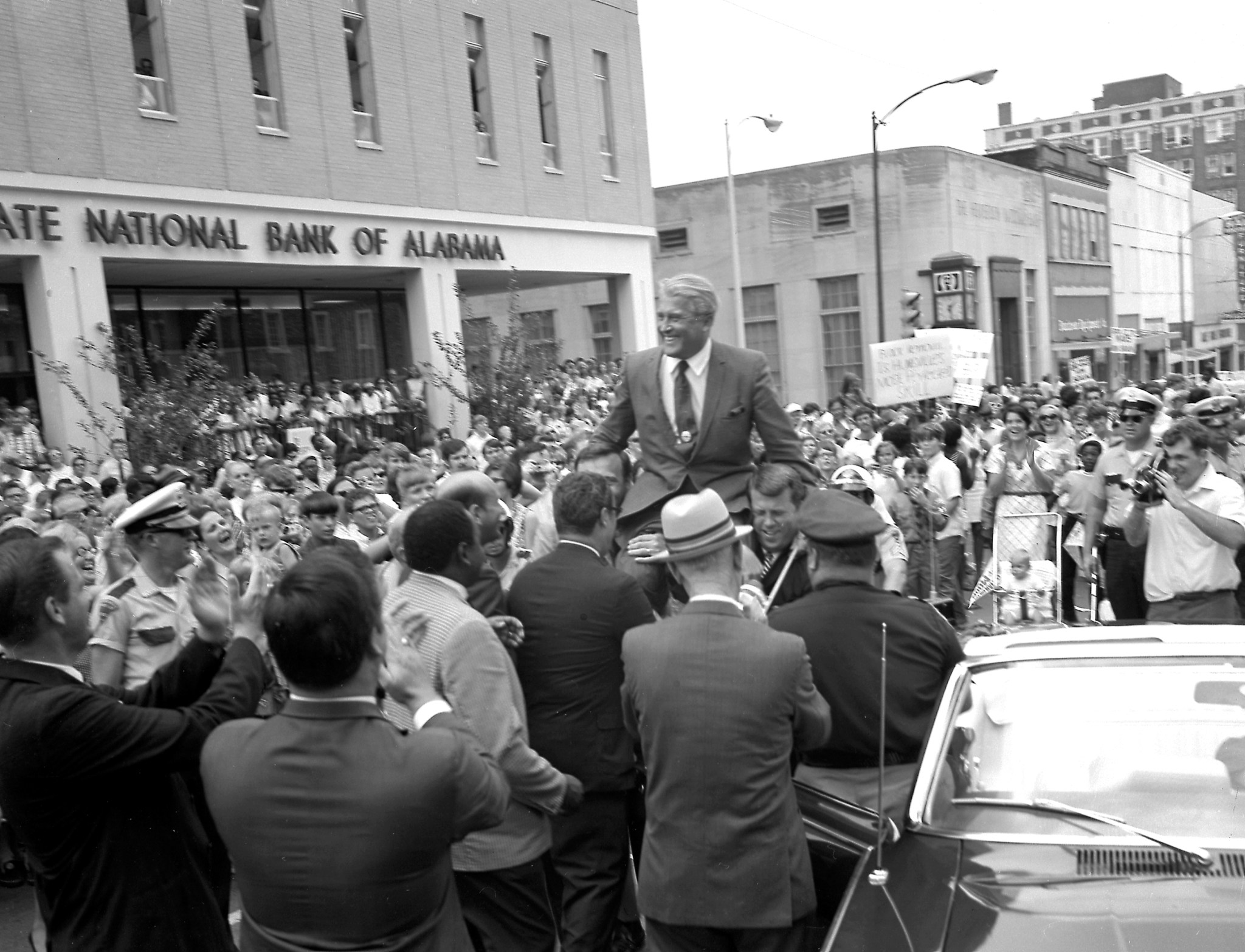In This Week’s Star
- Rick Burt Appointed Marshall Safety and Mission Assurance Director
- Jay Onken Named Director of Space Systems Department at Marshall
- NASA Completes First Round of Composite Shell Buckling Tests with a Bang
- NASA Honors Marshall Team Members with Silver Snoopy Award
- Marshall Personnel Play Important Role in IMAX Film
- I Chart the Path: Dave Edwards
- Chandra Finds Evidence for Violent Stellar Merger
- This Week in NASA History: Huntsville Celebrates Apollo 11 Splashdown — July 24, 1969
- Obituaries
Rick Burt Appointed Marshall Safety and Mission Assurance Director
Rick Burt has been appointed director of the Safety and Mission Assurance Directorate at NASA’s Marshall Space Flight Center, effective July 31. Steve Cash, who has served as the organization’s director since September 2011, is retiring after a 34-year career with NASA.
Burt will have primary management responsibility for planning and directing safety, reliability and quality engineering and assurance operations for Marshall.
“Nothing is more important than the safety of our crews and of the men and women developing the knowledge and technology for living and working in space,” said Marshall Director Todd May. “Rick’s experience will help us ensure that safety remains paramount as we build and fly the spacecraft that will take human explorers on missions deeper into space than ever before, including on our journey to Mars.”
Throughout his 26-year NASA career, Burt has served in multiple technical management and leadership positions. He has been chief safety officer within SMA since 2011. In 2007, he was named manager of the Marshall Engineering Directorate’s Test Laboratory. He was appointed to the Senior Executive Service — the personnel system that covers most of the top managerial, supervisory and policy positions in the executive branch of the federal government — as manager of the Ares 1 First Stage program in 2006.
Burt was chief engineer of Marshall’s Reusable Solid Rocket Motor Project from 2002-2005, responsible for evaluating the project’s technical aspects and leading technical reviews in preparation for the Space Shuttle Program’s Return to Flight following the Columbia accident. In this role, he served as a trusted agent of the Independent Technical Authority, a key NASA safety organization conducting, supporting and overseeing technical work across the agency to ensure safe and reliable operations and mission success.
He was named deputy manager of the Reusable Solid Rocket Motor Project in 1999, assisting in overall project management, including production, contractor performance evaluation and flight readiness. He was deputy manager of the Space Shuttle Projects Office from 1998-99, overseeing program management interfaces for the development, testing, flight hardware production and performance evaluation of the shuttle propulsion elements.
Burt was technical assistant to the Reusable Solid Rocket Motor Project manager from 1997-98, managing key technical activities such as environmental compliance and obsolescence issues. He was the project’s business manager from 1996-97, responsible for the planning and execution of a $400 million annual budget for the production of flight and test solid rocket motors in support of the Space Shuttle Program flight manifest.
He joined NASA in 1990 as an enhancement manager for the Reusable Solid Rocket Motor Project. Prior to his NASA career, he worked for 12 years in numerous leadership positions with the Tennessee Valley Authority’s nuclear power program.
A native of Columbia, Tennessee, Burt earned a bachelor’s degree in mechanical engineering from Tennessee Technological University in Cookeville in 1978.
Burt has received numerous awards and honors, including the NASA Exceptional Achievement Medal in 2013. He was awarded the NASA Outstanding Leadership Medal in 2005 for his chief engineering work in support of the agency’s Return to Flight efforts. In 1997, he was selected by astronauts to receive their Silver Snoopy Award for his support of the Reusable Solid Rocket Motor Project. He was a NASA Space Flight Awareness honoree in 1996.
Burt and his wife, Susan, live in Rogersville, Alabama. They have two children, two grandchildren and are expecting a third grandchild in August.
Jay Onken Named Director of Space Systems Department at Marshall
Jay Onken has been appointed director of the Space Systems Department in NASA’s Marshall Space Flight Center Engineering Directorate, effective immediately. He succeeds Larry Leopard, who was recently named deputy director of the Engineering Directorate.
Onken has more than 27 years of engineering, management and leadership experience in the design, development and operation of space transportation technologies and flight systems. He had been Space Launch System deputy chief engineer since 2014 and was acting deputy in 2013, where his focus was coordination with Marshall’s engineering management and leading issue resolution with NASA’s Kennedy Space Center and Johnson Space Center counterparts.
Onken was appointed to the Senior Executive Service — the personnel system that covers most of the top managerial, supervisory and policy positions in the executive branch of the federal government — as director of the Mission Operations Laboratory at Marshall in 2008. He had been deputy director of the laboratory since 2004.
Onken was named deputy manager for the International Space Station Payload Operations and Integration Function at Marshall in 2002. He spent the previous year at Johnson, establishing a resident office to facilitate daily coordination between the Johnson Mission Operations Directorate and the Marshall Mission Operations Laboratory. He had been an ISS payload operations director since 1999.
He was assigned to the Chandra X-ray Observatory Program in 1995, where he led the planning and execution of the first end-to-end test between Chandra and the Operations Control Center at the Smithsonian Astrophysical Observatory in Cambridge, Massachusetts. He then served as flight director for the observatory’s activation and checkout period, including the on-orbit propulsive maneuvers performed by the observatory.
Onken joined Marshall in 1989 as an orbital analysis engineer conducting mission design analysis, producing flight products and supporting real-time operations for six Spacelab missions.
A native of Mason City, Illinois, Onken earned a bachelor’s degree in aeronautical and astronautical engineering from the University of Illinois in Champaign. He has three children and lives in Toney, Alabama.
NASA Completes First Round of Composite Shell Buckling Tests with a Bang
How do you learn how to build stronger, lighter rockets and spacecraft structures? Come up with a totally new design, use an innovative material, build the rocket part and then break it. That’s exactly how engineers not only learn how a structure will perform during one test, but also learn how to use high-tech models to predict how a structure will perform before it ever gets to the launch pad.
NASA successfully completed the first series of high-tech composite tests in late spring as a large cylindrical barrel was tested to failure under extreme compressive loads of almost 900,000 pounds, all in the name of building lighter, stronger primary structures for future launch vehicles.
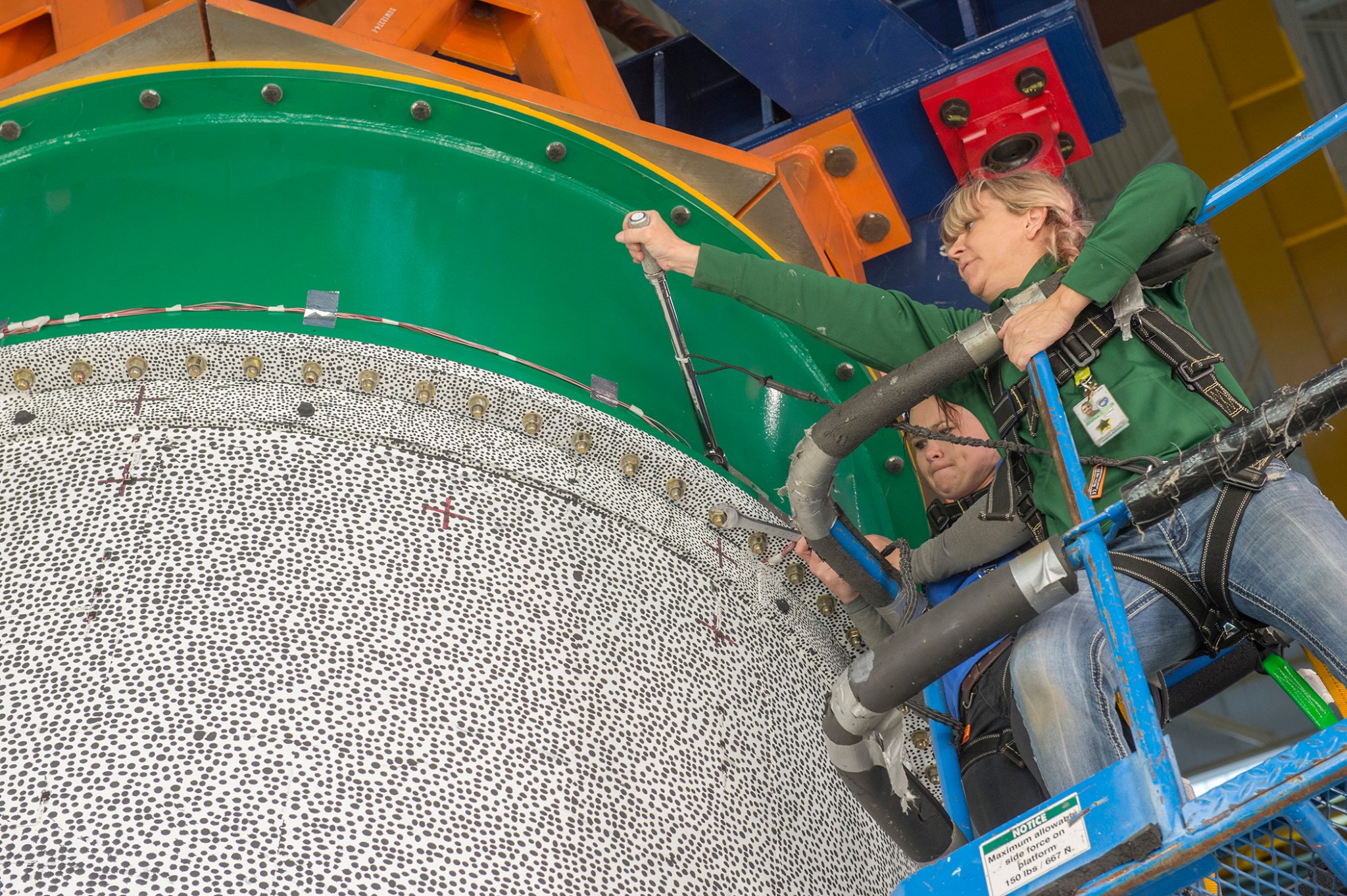
During the testing for the Shell Buckling Knockdown Factor Project, which occurred at NASA’s Marshall Space Flight Center, force was increasingly applied to the top of a composite barrel to evaluate the structural integrity of the test article. The resulting data will help engineers in the design and build of primary structures for future launch vehicles.
“Because of the team’s experience with state-of-the-art modeling techniques, we were optimistic that the barrel would perform well and that we could predict when the hardware would fail,” said Marc Schultz, research engineer in the Structural Mechanics and Concepts Branch at NASA’s Langley Research Center. Schultz is leading the tests for the NASA Engineering and Safety Center. “In fact, we predicted the failure load within 1 percent of the actual failure load, which was very exciting.”
Composite materials are increasingly being considered and used for launch-vehicle structures. When properly applied, composite structures have the potential to have many benefits over traditional metallic structures, including lower mass, better fatigue resistance, lower part count and reduced life-cycle cost.
Seven tests were performed on the 8-foot-diameter, 8.4-foot-tall graphite-epoxy, honeycomb-core sandwich composite barrel that was designed by NASA. The barrel was outfitted with nearly 300 individual electronic strain and displacement sensors and approximately 16,000 fiber optic sensors to evaluate the structural integrity of the barrel. Additionally, special software was used with high-speed and low-speed cameras to monitor the black-and-white polka-dot pattern and measure movement and deformation of the test article during loading.
“It’s always a bit surprising when such a sudden failure occurs,” Schultz said. “All eyes were on the test article and, even though we were expecting it, the failure still caught us off guard. The loud bang first startled us and then we saw the crack all the way around the barrel that formed almost instantaneously from the buckling event.”
This test series was the first large-scale composite test for the Shell Buckling Knockdown Factor Project, which is focused on developing and validating new analysis-based design guidelines for developing safer and lighter space structures. Designing lighter rockets will allow launch vehicles to carry larger payloads — landers, equipment, habitats, food, water and supplies — paramount to allow humans to travel to deep space destinations, including Mars, where quick resupply is not possible.
“Our test team learned a great deal about what to expect when testing large cylindrical composite structures during this series — such as instrumenting the structure, failure modes and capture system after we tested to failure,” said Lucas Day, Marshall’s lead test engineer for the shell buckling efforts. “We will apply the knowledge gained to the remaining four tests planned over the next four years.”
The testing was conducted at Marshall’s Load Test Annex, part of the Structural and Dynamics Engineering Test Laboratory previously used to test large structures for the Saturn V rocket, space shuttle and International Space Station. Construction is underway at the facility on steel reaction towers and fixtures that will be used for structural loads testing on the Core Stage Intertank and Engine Section for the Space Launch System for the next era of human exploration to deep space destinations, including Mars.
NASA Honors Marshall Team Members with Silver Snoopy Award
On July 21, team members at NASA’s Marshall Space Flight Center were honored with the coveted Silver Snoopy award. The NASA astronaut corps presents the Silver Snoopy to outstanding civil service and contractor employees who have significantly contributed to America’s human spaceflight program.
Marshall Deputy Director Jody Singer and NASA astronaut Andrew Morgan presented the awards to 21 Marshall team members during a ceremony in Morris Auditorium. For more information about the award, click here.
Honorees included Nathaniel D. Brown, Amanda S. Drake, Jimmy Eckles, Charles L. Nola and Leann Thomas, all of the Flight Programs & Partnerships Office; Jesse L. Bales, Stephen S. Burch, Seunghee Lee, Carl V. Lutton and Madelyn J. Suttle of the Safety and Mission Assurance Office; Michael Lee, Craig Schulenberg and Melissa Therrell of the Engineering Directorate; Beth Cochran and Michelle E. Vanterpool of the Office of Chief Financial Officer; Shane Canerday and Christopher W. Rosson of the Space Launch System Program Office; Phillip K. Hendrix of the Office of Center Operations; Michele R. Williamson of the Office of Strategic Analysis and Communications; Sherry L. Hopper of the Office of Human Capital; and James Gardner Jr. of the Office of Chief Information Officer.
Marshall Personnel Play Important Role in IMAX Film
By Bill Hubscher and Lori Meggs
You won’t see them at the red carpet premiere, but a group of NASA Marshall Space Flight Center team members’ names are in the credits for helping create the latest IMAX in theaters now.
For the past two years, as astronauts were conducting hundreds of scientific investigations on the International Space Station, they also helped film a documentary, “A Beautiful Planet,” from the unique perspective of space. To capture the images needed to make a visual impact, they had to train to use the complex IMAX camera that had never been used in microgravity, and work with flight controllers at the Payload Operations Integration Center at Marshall — science mission control for the space station.
Many of these Marshall team members were on hand for a special screening of the film at the U.S. Space & Rocket Center July 20, and saw for the first time the stunning features of our planet by day and night as captured by station crew members. One of the “stars” of the movie, astronaut Terry Virts, flew in for the occasion to watch alongside the team that guided him through filming, and to answer questions. The movie shows how Virts and others live and work in space, in which the Marshall team plays a role in scheduling and coordinating their science workload on a 24/7 basis.
“We were delighted to play a significant role in developing the planning, products and crew procedures for this film,” said Stephanie Dudley, a payload operations manager in the Payload Operations Integration Center. “Our team worked with IMAX to develop a way to downlink and reassemble all the high-definition video on the ground. IMAX recognized the effort and wanted to honor those who helped make it happen.”
“We enjoyed the adventure of helping the production team get the images they needed to share what our astronauts see with the rest of the world,” said Jason Norwood, deputy branch chief of Training and Crew Operations at Marshall. “It was a great team effort on the part of our flight controllers and included more than the dozen or so names they were able to list in the closing credits of the film.”
The station provided the filmmakers with the unparalleled perspective of how both natural and human forces shape Earth. The film, narrated by Academy Award-winning actress Jennifer Lawrence, showcases our home planet while providing a closer look at NASA’s exploration efforts. It highlights the space station as a platform for scientific research and a stepping stone to deep space exploration.
“Earth is our only home right now, so it’s important for people to see that,” said John Grunsfeld, retired astronaut and NASA’s associate administrator for the Science Mission Directorate. “It’s a human story, but it’s also about the relationship of humans to our planet. The film takes you on the journey to space and back.”
The film is being shown locally at the U.S. Space & Rocket Center. For show times and tickets, click here.
Hubscher and Meggs, ASRC Federal/Analytical Services employees, support the Office of Strategic Analysis & Communications.
I Chart the Path: Dave Edwards
By Derek Hooper
While growing up in Florence, Alabama, Dave Edwards was never far from the activities of NASA’s Marshall Space Flight Center. He remembers how his family would travel to the U.S. Space & Rocket Center to see Ms. Baker, a squirrel monkey that was one of the first two animals launched into space by the United States and recovered alive.
Edwards has now been with NASA for over 27 years. In his daily activities, Edwards’ role is to support the Science and Technology Office, which includes serving as Chief Engineer on several projects, keeping track of the more than 30 activities and projects that are within his portfolio and keeping the engineering managers apprised of the current status of these projects.
“Within Science and Technology, it’s a very dynamic world,” said Edwards. “Things are going well one minute and challenging the next. It’s simply the nature of technology development — it moves at a very fast pace.”
After graduating from the University of North Alabama in Florence in 1985, Edwards moved to Auburn, Alabama, and enrolled in Auburn University’s graduate program in physics. It was there that Edwards was introduced to NASA. His mentoring professor, John Williams, was receiving an educational grant from the agency to investigate the effects of atomic oxygen on materials.
“I was not one of those kids who said, ‘I’ve got to go to work at NASA,’” Edwards explained. “It was always something that was cool and seemed unreachable. And then when I had an opportunity to work here and build my own test facility — that was a dream come true.”
Edwards has a great appreciation for the numerous possibilities the agency provides. “I don’t know of another organization that offers as much opportunity as NASA,” he said. “There is so much opportunity within this agency for those willing to pursue it.”
When asked for advice for people just starting out with NASA, Edwards explained that one of the lessons he learned is that fear is a normal part of life. “Everyone has some kind of fear, and we can take those fears and in our own mind, we can create giant monsters out of them,” he said. “In reality, things are never as bad as we imagine. Accepting that will enable you to stretch well outside of your comfort zone.”
Currently, Edwards and his team are working on maturing the technologies necessary for the nation’s journey to Mars, and are making sure the technologies reach a usable, reliable state when it comes time to employ them. One such technology is in-space manufacturing, which allows 3-D printers to create critical hardware and tools to perform maintenance. “On a long-duration mission, crews are going to need spare parts,” Edwards explained. “We don’t have a sack big enough to carry all the spare parts we might need. One way to resolve that is in-space manufacturing.”
As for the goals of his office, Edwards says the single most important objective of the Chief Engineers Office is to ensure any project they work on is successful. “Whatever success means for the mission, when we achieve that, the Chief Engineers Office did its job and lived up to the expectations everybody has of us.”
Edwards has held many different positions within the agency, but his excitement about NASA and space exploration continues to develop. He takes great pride in what he does and in the agency he works for.
“In the grand scheme of things, what we do here at NASA is just cool and we have absolutely won the lottery when you think about it,” he said. “We live in the greatest country on the planet, we work for the greatest organization that has been conceived by mankind and we are enabling the future of space exploration at this very moment.”
Hooper, a NASA intern, is supporting the Office of Strategic Analysis & Communications.
Chandra Finds Evidence for Violent Stellar Merger
Gamma-ray bursts are some of the most violent and energetic events in the universe. Although these events are the most luminous explosions in the universe, a new study using NASA’s Chandra X-ray Observatory, NASA’s Swift satellite and other telescopes suggests that scientists may be missing a majority of these powerful cosmic detonations.
Astronomers think that some GRBs are the product of the collision and merger of two neutron stars or a neutron star and a black hole. The new research gives the best evidence to date that such collisions will generate a very narrow beam, or jet, of gamma rays. If such a narrow jet is not pointed toward Earth, the GRB produced by the collision will not be detected.
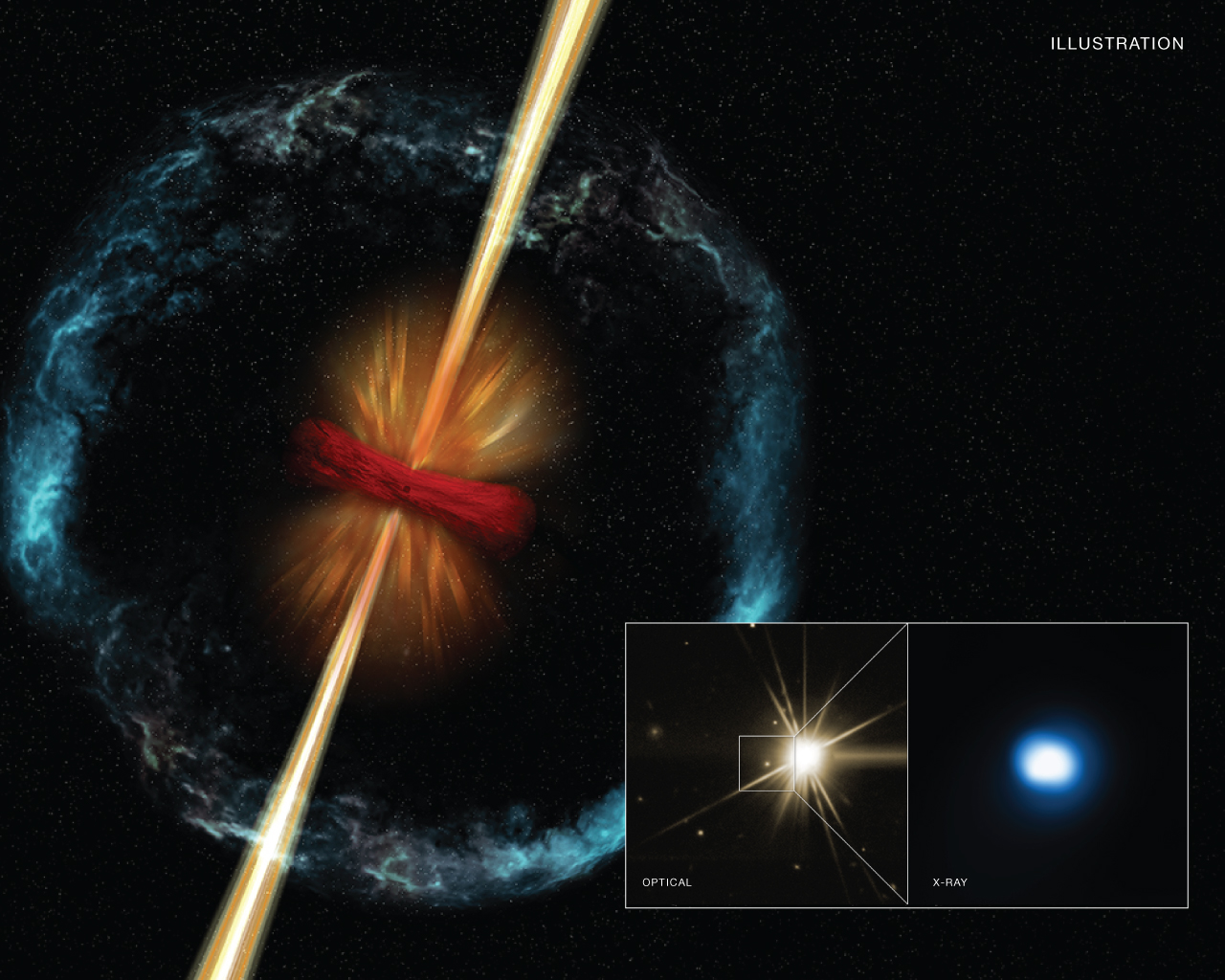
Collisions between two neutron stars or a neutron star and black hole are expected to be strong sources of gravitational waves that could be detected whether or not the jet is pointed toward Earth. Therefore, this result has important implications for the number of events that will be detectable by the Laser Interferometry Gravitational-Wave Observatory and other gravitational wave observatories.
On Sept. 3, 2014, NASA’s Swift observatory picked up a GRB — dubbed GRB 140903A. Scientists used optical observations with the Gemini Observatory telescope in Hawaii to determine that GRB 140903A was located in a galaxy about 3.9 billion light years away, relatively nearby for a GRB.
The large panel in the graphic is an illustration showing the aftermath of a neutron star merger, including the generation of a GRB. In the center is a compact object — either a black hole or a massive neutron star — and in red is a disk of material left over from the merger, containing material falling toward the compact object. Energy from this infalling material drives the GRB jet shown in yellow. In orange is a wind of particles blowing away from the disk and in blue is material ejected from the compact object and expanding at very high speeds of about one tenth the speed of light.
The image on the left of the two smaller panels shows an optical view from the Discovery Channel Telescope with GRB 140903A in the middle of the square and a close-up X-ray view from Chandra on the right. The bright star in the optical image is unrelated to the GRB.
The gamma-ray blast lasted less than two seconds. This placed it into the “short GRB” category, which astronomers think are the output from neutron star-neutron star or black hole-neutron star collisions eventually forming either a black hole or a neutron star with a strong magnetic field. The scientific consensus is that GRBs that last longer than two seconds result from the collapse of a massive star.
About three weeks after the Swift discovery of GRB 140903A, a team of researchers led by Eleonora Troja of the University of Maryland, College Park, observed the aftermath of the GRB in X-rays with Chandra. Chandra observations of how the X-ray emission from this GRB decreases over time provide important information about the properties of the jet.
Specifically, the researchers found that the jet is beamed into an angle of only about 5 degrees based on the X-ray observations, plus optical observations with the Gemini Observatory and the Discovery Channel Telescope and radio observations with the National Science Foundation’s Karl G. Jansky Very Large Array. This is roughly equivalent to a circle with the diameter of your three middle fingers held at arms length. This means that astronomers are detecting only about 0.4 percent of this type of GRB when it goes off, since in most cases the jet will not be pointed directly at us.
A paper describing these results was recently accepted for publication in The Astrophysical Journal and is available online. NASA’s Marshall Space Flight Center manages the Chandra program for NASA’s Science Mission Directorate. The Smithsonian Astrophysical Observatory in Cambridge, Massachusetts, controls Chandra’s science and flight operations.
For more Chandra images, multimedia and related materials, click here.
This Week in NASA History: Huntsville Celebrates Apollo 11 Splashdown — July 24, 1969
This week in 1969, city officials carry Wernher von Braun, the first center director of NASA’s Marshall Space Flight Center, on their shoulders during a celebration in downtown Huntsville following the completion of Apollo 11 — the first crewed lunar landing. Marshall worked with companies across America to build the Saturn V launch vehicle that sent astronauts to the moon. The NASA History Program is responsible for generating, disseminating, and preserving NASA’s remarkable history and providing a comprehensive understanding of the institutional, cultural, social, political, economic, technological, and scientific aspects of NASA’s activities in aeronautics and space. For more pictures like this one and to connect to NASA’s history, visit the History Program’s webpage. (NASA)
Obituaries
Kenneth D. Brown, 81, of Huntsville, died July 18. He retired from the Marshall Center in 1994 as an aerospace engineer. He is survived by his wife, Barbara Counts Brown.
Stephen L. Cushman, 70, of Madison, Alabama, died July 22. He retired from the Marshall Center in 2011 as a facility manager and safety specialist. He is survived by his wife, Paula Potter Cushman.


























